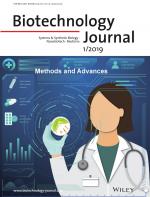New publications about SCENT project
Two papers were published related to SCENT project and our E-noose methodology to distinguish odours. Early this year, on February, Gonçalo Santos and Ana Carolina Pádua were both in Prague to attend the Biodevices 2019 Conference and the Proceedings of the 12th International Joint Conference on Biomedical Engineering Systems and Technologies were now released.
The first paper develops the concept of electronic nose, the best example of artificial olfaction, by explaining the components and design of our E-noose device. This E-noose is based on optical sensors, which possess a new class of sensing materials invented by our research group. These materials behave like gels and 2 different spreading method techniques have been used to shape them in sensing films: film coating and spin coating. The second paper uses the E-nose for identification of 13 pure volatile organic compounds and evaluates the influence of the sensing film spreading method on its classification capabilities.
1. Gonçalo Santos, Cláudia Alves, Ana Pádua, Susana Palma, Hugo Gamboa and A. Cecília Roque - An Optimized E-nose for Efficient Volatile Sensing and Discrimination. Proceedings of the 12th International Joint Conference on Biomedical Engineering Systems and Technologies - Volume 1: BIODEVICES, Prague, Czech Republic.
2. Ana Pádua, Jonas Gruber, Hugo Gamboa & A. Cecília Roque - Impact of Sensing Film’s Production Method on Classification Accuracy by Electronic Nose. Proceedings of the 12th International Joint Conference on Biomedical Engineering Systems and Technologies - Volume 1: BIODEVICES, Prague, Czech Republic.







